First Round Fun
Host: Mudgeacca Station
Written by Claire Britton, Station Manager
We generally do two ‘rounds’ of mustering a year at Mudgeacca with our breeders. The first round always falls around Easter, just when the summer heat has had the edge knocked off of it – this makes it a bit more pleasant for both the cattle and humans. Our main line of cattle is a Droughtmaster/Santa Gertrudis base, so they don’t get too affected by heat, but I think it’s fair to say everyone is happier when not having to walk kilometres to the yards in extreme temperatures of 40 plus and we certainly avoid it at all costs.
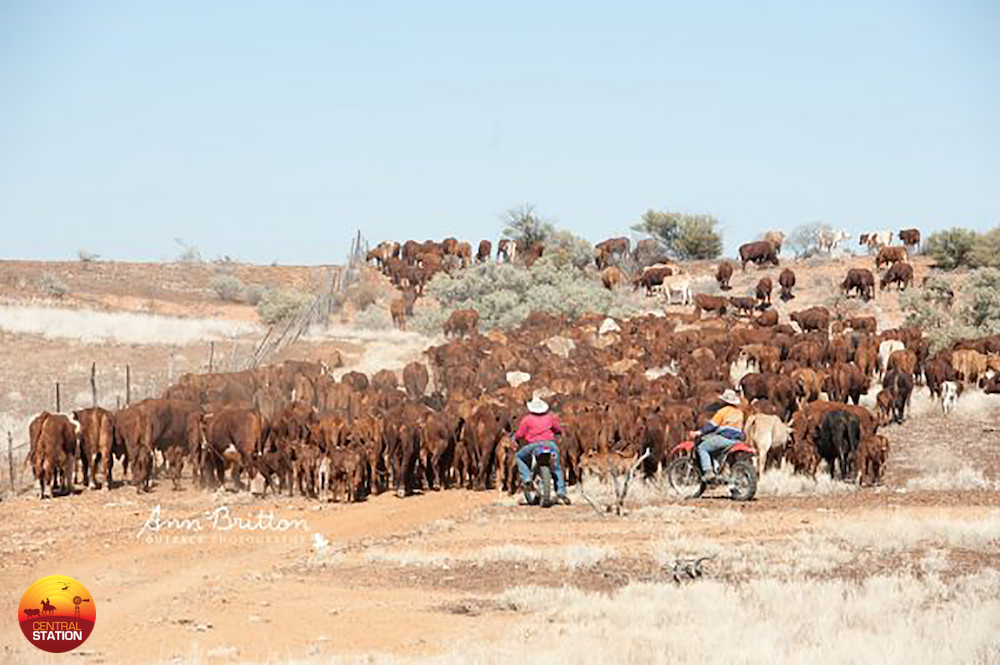 Two motor bikes on the tail pushing the mob along at a gentle pace.
Two motor bikes on the tail pushing the mob along at a gentle pace.
This year we had a later start to first round thanks to a flood which came through mid-March followed by patchy rainfall. The flood meant a lot of surface water and feed growing so the cattle were spread out, and there was a chance of us being bogged when trying to reach them. Mudgeacca is predominantly flood country, with creeks and channels veining their way from the north to the southern end of the property. There was also the presence of 3-day virus which occurs after rain and is carried by mosquitos and flies. The virus attacks and affects the most healthy animals. They are unwell, unfit to walk long distances, and unmoveable for three days, hence the name. Some die, but most recover back to 100% health. Once the 3-day virus time period was seen to be over, mustering commenced.
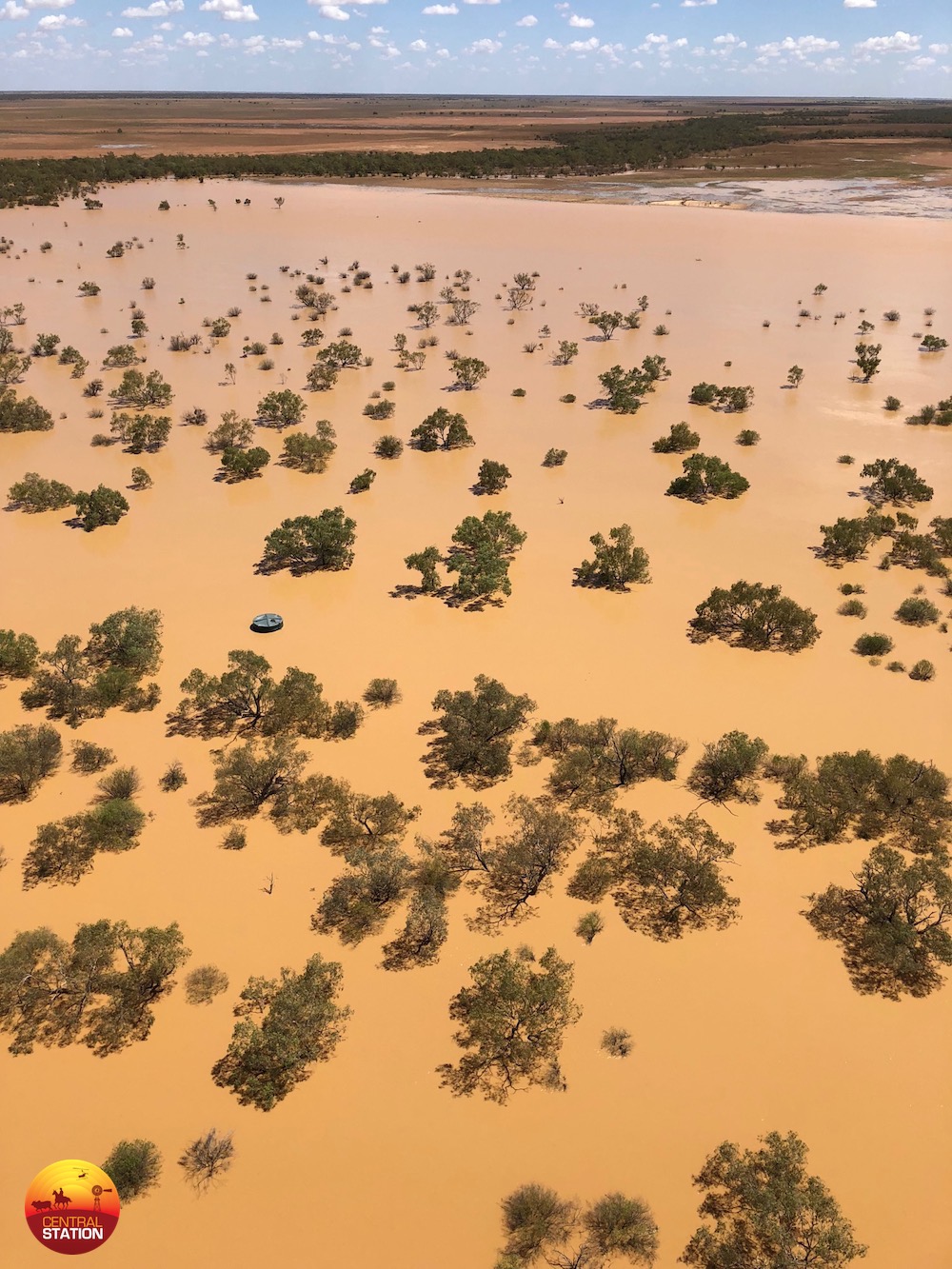
I’m 28, have lived my entire life with an outback lifestyle, hardly missing any mustering action, and I still get butterflies the morning that kicks off ‘first round’. There is a buzz, all the bikes are serviced and ready for a big few weeks of work, radios are charged, and the yards have been prepped ready for the first mob to come in. Your ears prick to the sound of the chopper coming and the ‘Morning, how are we doing this morning?’ voice from the pilot crackles over the two way.
It’s about to be on. There are 1500 head to be put through the yards.
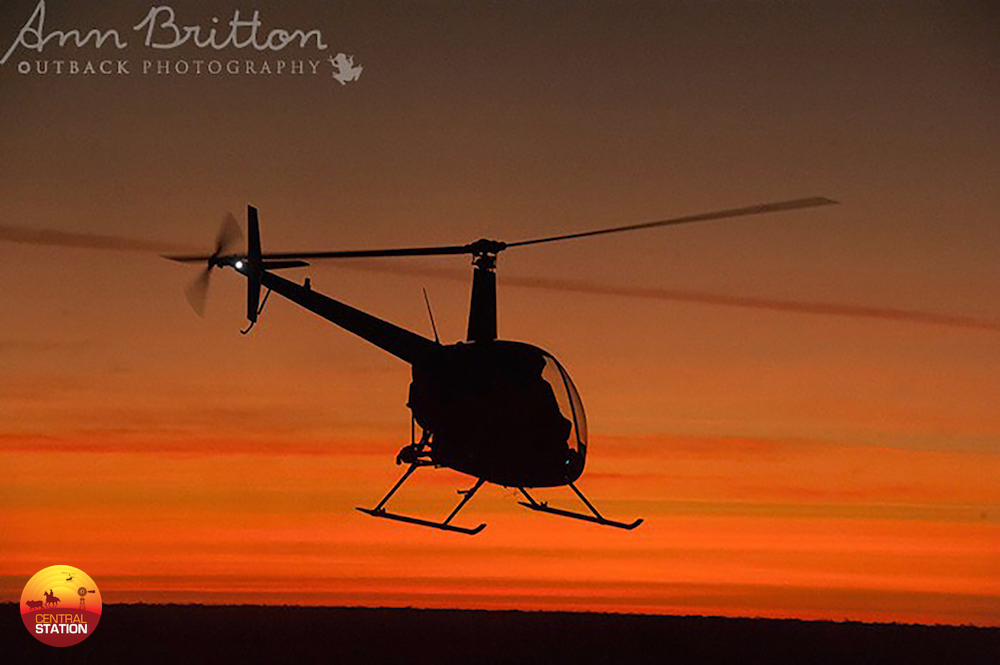
Goodwood Pastoral has owned Mudgeacca since August 2016, so we are still learning every muster; learning which plan is best, and that the different cattle we run in the paddocks might run another way to when we mustered last time. There are 12 larger paddocks and 6 smaller paddocks that make up the property. For first round we had cattle with a good spread over the paddocks, and therefore had two ‘cuts’ – pretty much an eastern cut and western cut, which meant we got one side all together with the chopper, about 5 paddocks boxed together, taken to the yards and processed over 2-3 days. Then we would get the chopper back to do the other side and the same process would occur.
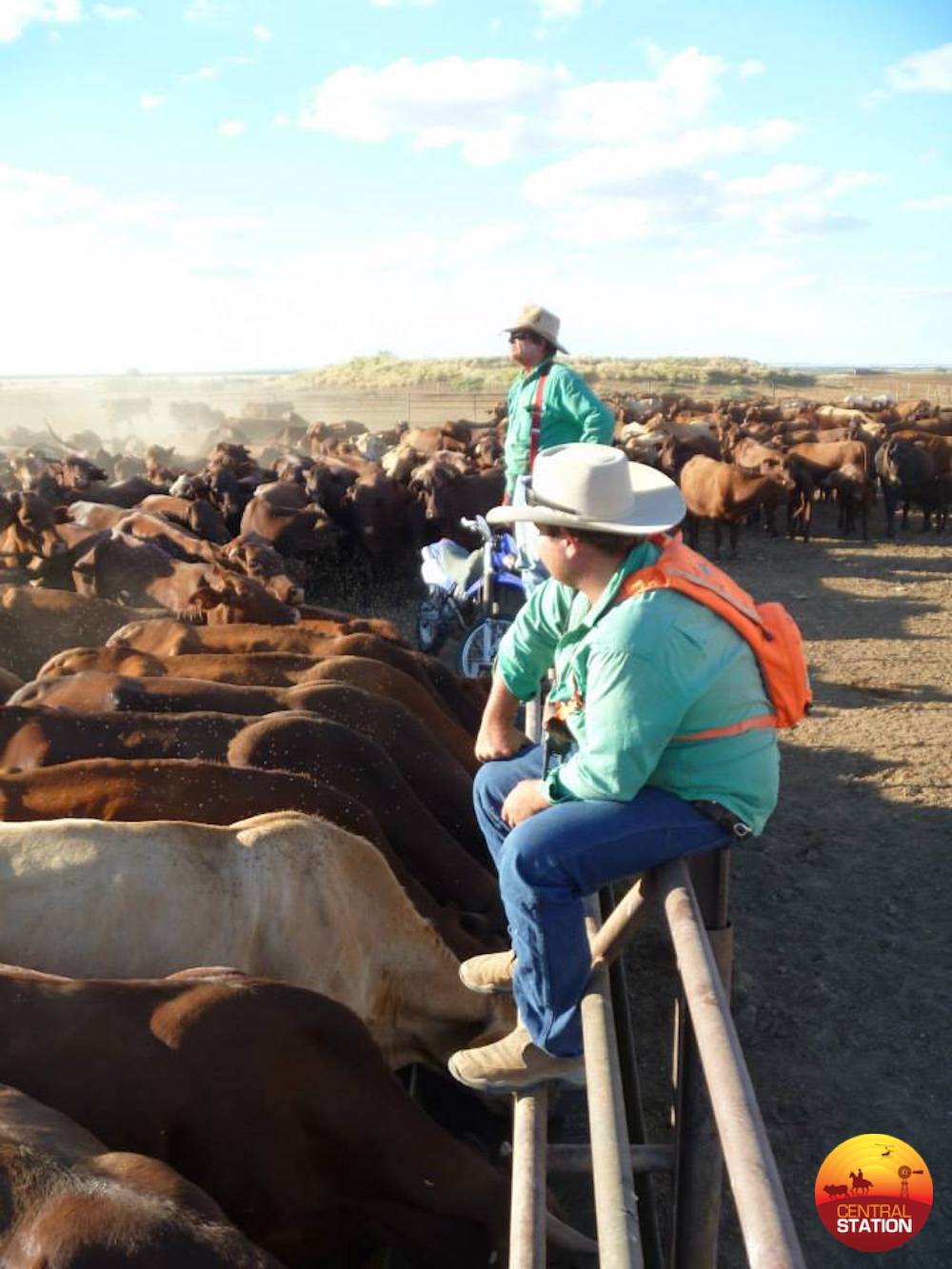
Our herd bulls are in with the breeders all year round, but they are given a week or so break when mustered. They seem to have a fresh outlook on life and their girlfriends just after a week and our cows seem to sync well together, giving us similar aged calves all year round. We also use each round to assess the breeders; anything that is lame, has bottled teats and therefore can’t feed their calves, or are dry and in good condition are drafted off separately.
We also take cows that are 10 years old or more off (if we have missed them in previous musters), so they are able to have their last calf and then sold onto abattoirs as boner cows or to a private sale to anyone who can get more years out of them. This way, if we do have a dry year we don’t have older cows falling away in condition. Older cows are sadly the first to do so and become too weak to walk out to feed, provide for their calf and/or get up from laying down and eventually are put down in the paddock. Prevention is always better than a cure.
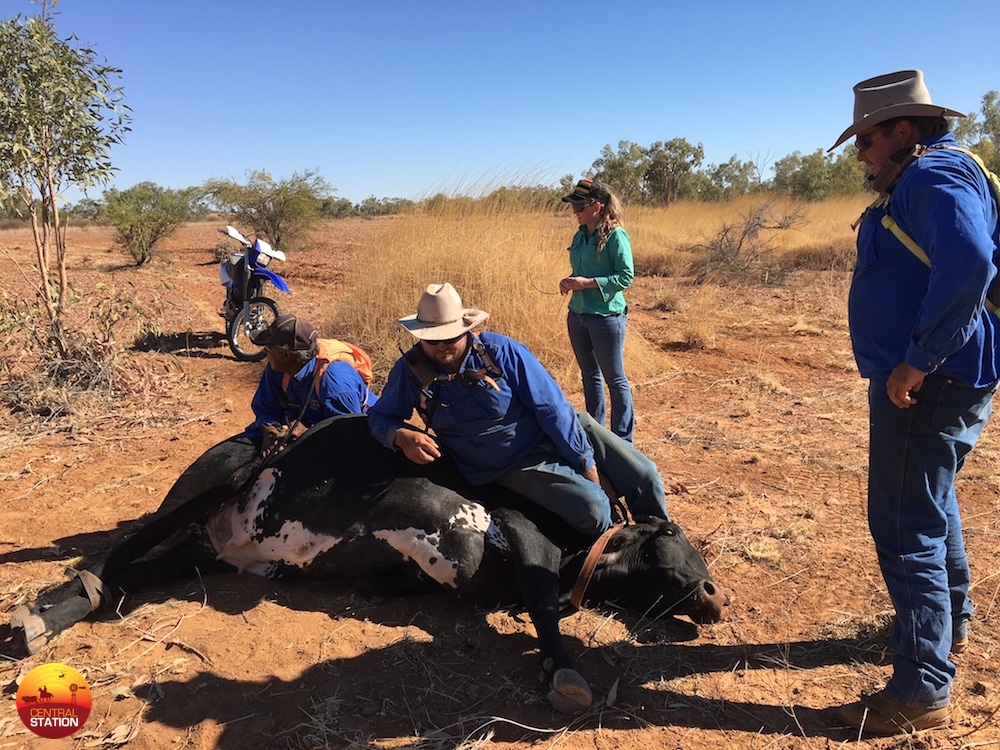
The season that has been and the season predicted gauges how ‘hard’ we wean. We like to give our cows the best chance to have a break and get stronger before their next calf, or to at least fall in calf again if not already. This year we had a great grass bank for the weaners to go onto so we did wean a bit hard, knowing Mum would be going onto good feed and going ahead and so would the weaner we ‘pull off’. In dry times, we wean hard and supplement the weaners or sell them straight off Mum.
My favourite part about mustering breeders? Probably mothering up. After we have drafted the cows separately to the calves, we brand the calves and let them go straight away to find Mum and the milk bar. I firmly believe any person in this industry should spend a day walking behind a mob of cows and calves. You’ll quickly learn patience! Whoever says it’s boring isn’t doing their job properly. There is always something to be looking at or thinking about. You need to pay attention to which calf belongs to which cow, if the smaller calves are getting hot and need a break, if there is a cow with bottled teats and the calf clearly isn’t getting a drink… the list goes on. There’s no such thing as boredom. It all helps when the time comes to get the cattle in yards and cows and calves get mismothered – identifying a calf and then knowing which cow to look for to help them mother up again is always a bonus.
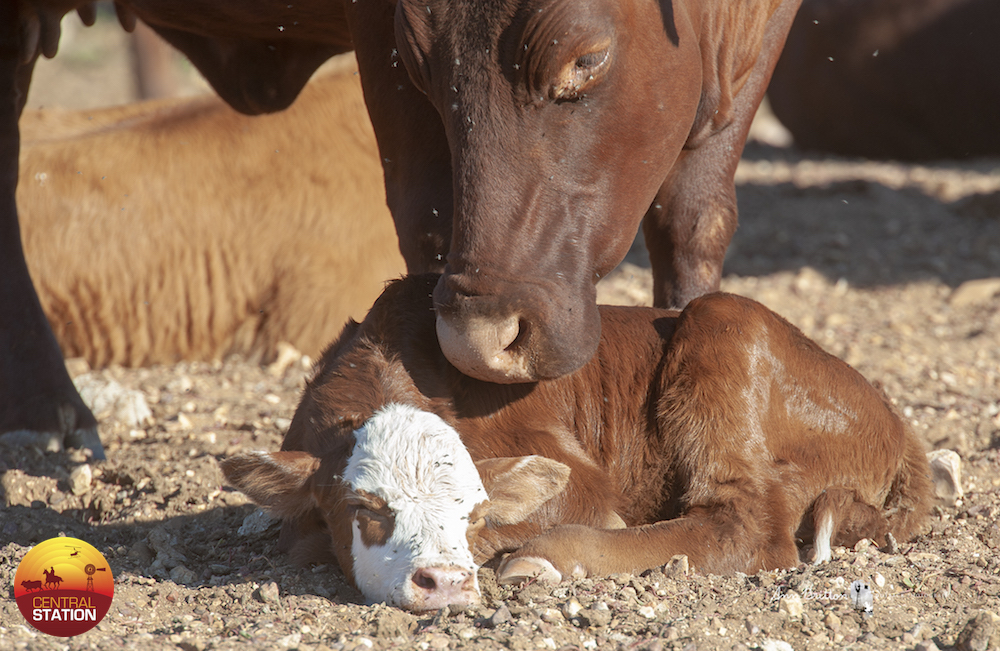
The physical part I love about ‘first round’, is the branding. That might sound a bit sadist to some, but to see or be involved in a team that runs like a well-oiled machine to get a job done is something else. We haven’t timed ourselves but on a polled heifer it would be nothing for it to only be in the cradle for a maximum of 30 seconds. A polled heifer means that it won’t need castrating (because it’s a girl) or dehorning (polled= no horns), therefore only branding, tagging and ear marking must be done. But even still, a horned bull calf would only be in the cradle only a few seconds more.
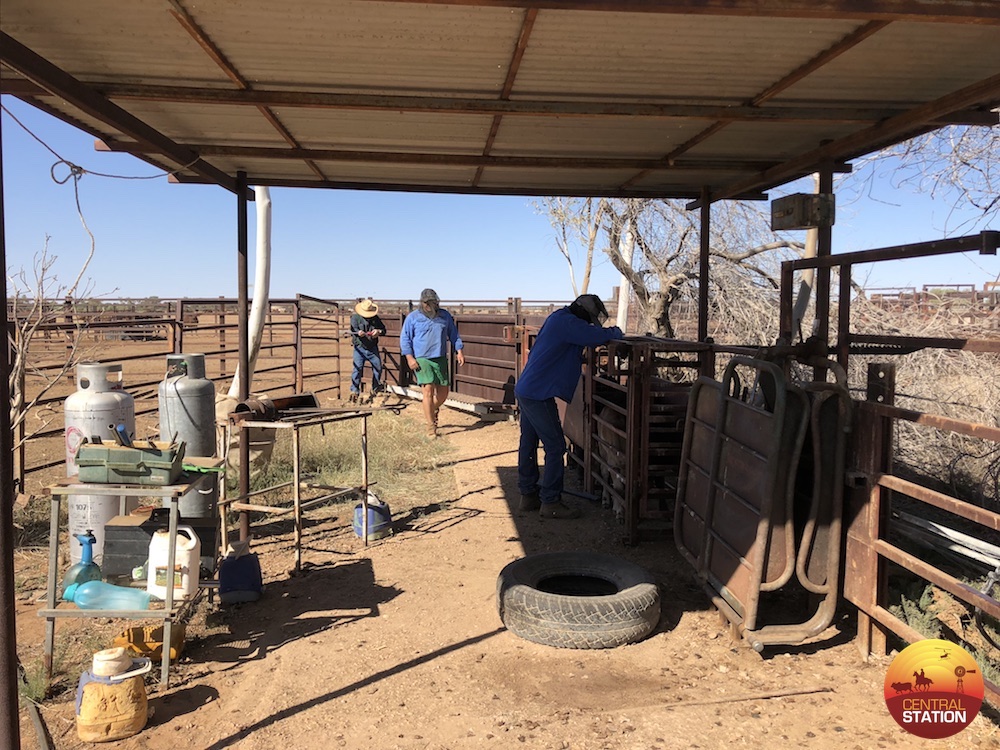
I can understand why some perceive ‘branding’ as cruel, as it involves blood and pain, there is no hiding from that. But it’s our job to be as quick and efficient as possible so the event is as short as possible. You don’t just become a ringer overnight, and we don’t do this job because we can swing a gate and ride a bike. We take pride in our job and the fact we can do a clean brand, quick castration and first time cut when dehorning. If the job is done right, we shouldn’t have to capture that animal again in it’s lifetime, simple as that. The calves go straight back onto Mum, she licks and cleans the wounds and they heal very quickly.
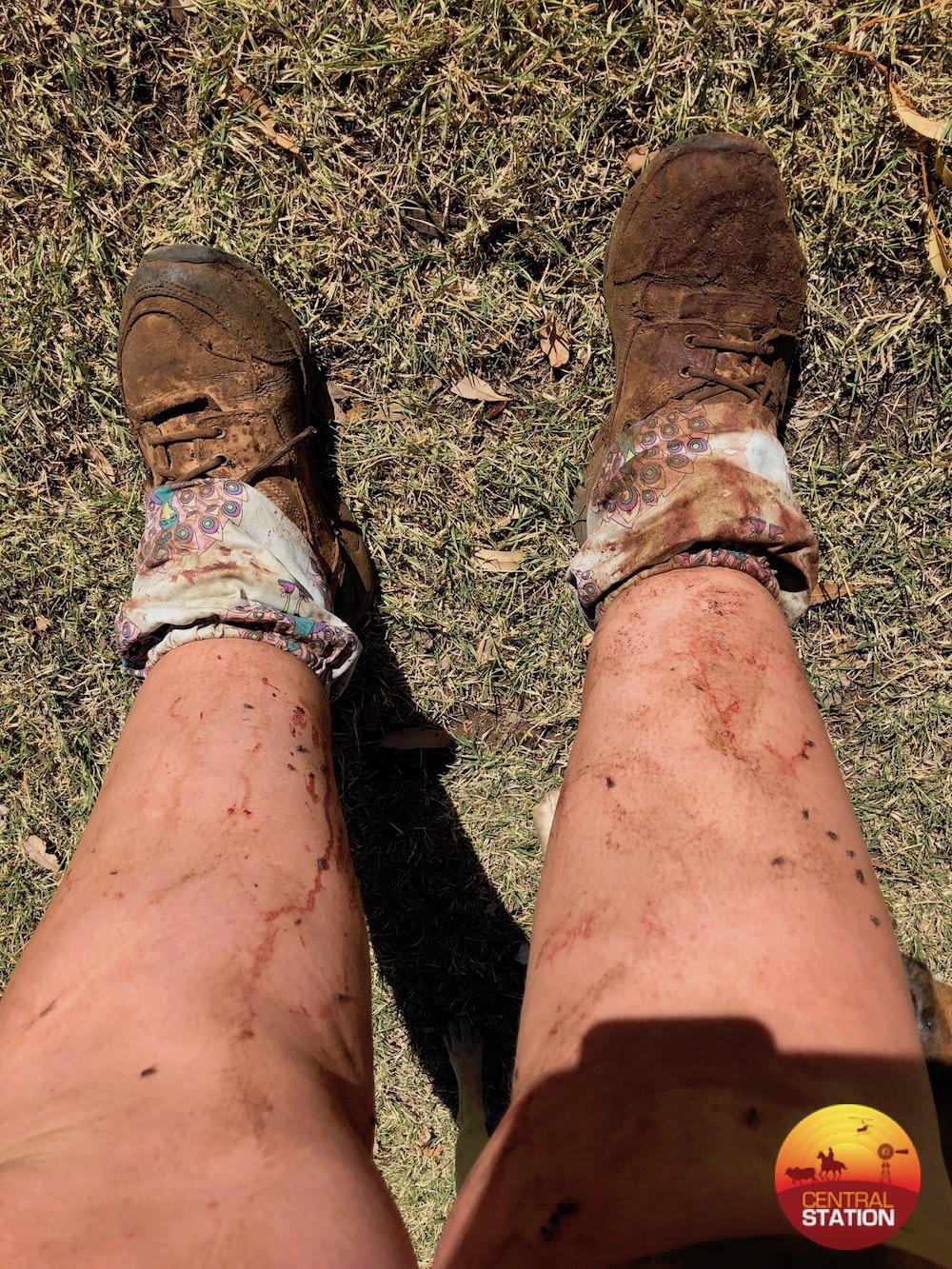
With weaners, we do get cleanskins, therefore they need processing just the same as the calves, but they don’t go back onto Mum, therefore we use certified fly repelling and antibacterial sprays to go over the dehorning area and purse (ball sack) after castration. They are let out of the yards straight away and can go onto pasture and allowed time to heal before being disturbed. We generally like to keep the processed weaners separate to the already branded ones, as when the branded ones are let out they will ‘pad’ their paddock – walk around the fence boundary of the paddock. So, if the freshly branded ones are separate they won’t feel the need to keep up with the others and pad the paddock the same, they can do their own thing and heal properly.
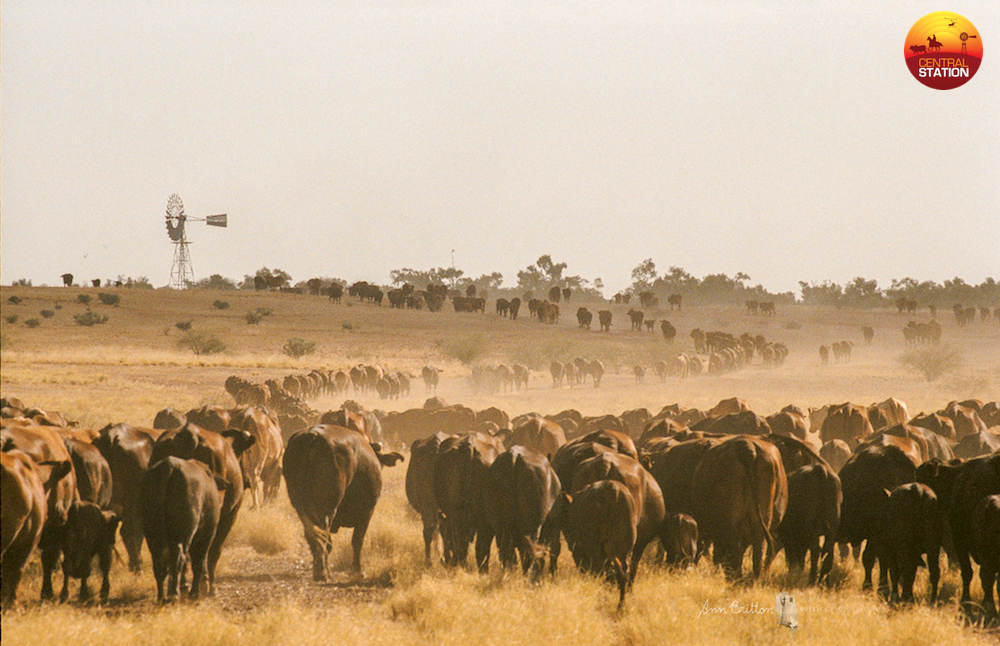
There’s great satisfaction when first round is done and dusted, literally! We started the 2018 first round on May 1, and wrapped it up on May 26. Mudgeacca was done as well as another non-organic block which runs about the same amount of breeders on it. We are all tired by the end of it, the days are long, the work is hard and testing but if you have the right crew it’s also fun and you look forward to the days ahead knowing you’ll get he job done with a smile on your face.
